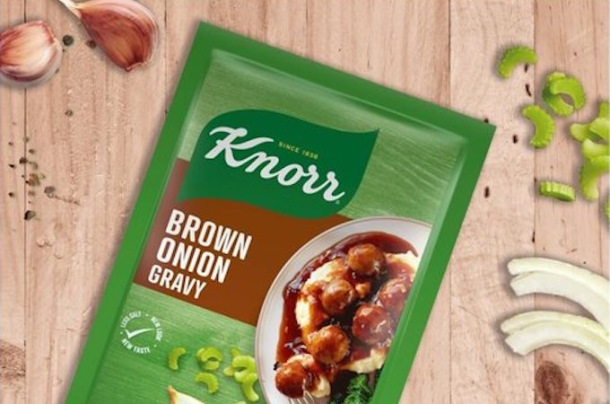Nielsen Consumer 360 event unpacks major shifts in SA's consumer landscape
The South African consumer landscape is set for a multitude of shifts in the next ten years, not least of which is the maturing of the local market with growth in the Generation X (35-49 year old) market segment set to outpace that in the Generation Y Millennial age group.
This was just one of a wealth of insights that emerged at Nielsen’s Consumer 360 event, which looked at the question of whether retailers and manufacturers are equipped to beat these and many other types of odds by anticipating and preparing for the future?
Speaking at the event, Nielsen East and South Africa MD Bryan Sun focused on the key drivers that will shape consumer opportunities until 2025, which included the fact that the total South African population will increase by 6%, just over 3-million people – albeit it at a slower pace than the global rate of 12.5%. This will be compounded by significant changes in labour force composition, with more than 4.3 million women entering the workforce by 2025.
He revealed; “The really interesting aspect is that within local demographic age groups, Generation X (35-49) growth will outpace Generation Y (26-34) growth (Millennials). So, although Y will still be marginally bigger in size than X, older generations will grow faster than younger generations resulting in different product and service needs and a keen focus on health and wellness amongst others.”
A perfect storm of urbanisation
Another key driver concerned the fact that 69% of South Africa’s population will be urbanised by 2025 as compared to the current 60%, resulting in cities and urban areas becoming increasingly crowded and some lacking the equivalent development in vital infrastructure to support the influx of people into cities.
“In a more urbanised world, space and time will be at a premium. Living areas will be smaller and storage areas and cupboard space available for product storage will become more limited with consumers requiring ease and efficient offerings to blend with their ‘on-the-go’ lifestyles. These types of dynamics create challenges that need to be solved and currently, demand for improved solutions is greater than supply as consumers’ aspirations emerge,” said Sun.
Exploding baskets
Nielsen innovation director Esti Prinsloo reported that the allocation of consumer spend in the South African market has remained relatively the same over the last 15 years, with absolute spend having grown ahead of inflation to the point where the total consumer goods basket is currently valued at R350-billion per annum.
Looking at the global picture, Prinsloo said that brand growth is becoming much harder to find, which is borne out by the sombre 0% growth amongst the global Top 20 manufacturers while the Top 200 manufacturers have only achieved 2.4% growth in the last 12-months. There are also more categories, brands and products than ever before but the big question is whether they’re actually fulfilling consumer needs?
Prinsloo cited the example of a local retailer that introduced a whopping 11,000 new product items in 2017 alone, with an average individual store having 1,400 product lines more than they did five years ago. “The average number of brands per basket has dropped from 116 in 2014 to 111 in 2018, with two-thirds of the top 20 brands shopped less often and the average number of store trips down from an average of 71 to 60 a year,” she reported.
“Looking at the drivers shaping this behaviour there are many factors influencing these consumption trends but to remain truly relevant requires brands to find a winning combination being convenient and making consumers lifestyles easier while also promoting healthy living via natural ingredients.”
Retail revolution
During his presentation, Nielsen Retail vertical lead Gareth Paterson reported that South Africa has added 100,000 new traditional trade (e.g. Spaza) and modern trade (hypermarkets, supermarkets) stores to its retail universe over the past 20 years. “The landscape is shifting, not only between modern and traditional channels but also from big to small, offline to online and between specialist channels such as convenience, specialist, pop up and niche outlets."
He elaborated that the South African traditional trade environment remains all about true convenience. “Today, traditional trade formats are highly flexible, adaptable, agile store types, attracting more commuters due to their close proximity to travel hubs allowing for ‘on-the-go’ shopping.
“What this means is that gone are the days when you could manage your distribution into all, or at least most, of the modern trade outlets or when traditional trade was limited to rural areas and its products were for lower-income consumers or only consisted of confectionary and beverages.”
Looking at the modern trade format, namely hypermarkets and supermarkets, Paterson described it as a highly competitive space. That said, these types of stores have the advantage of larger floor areas and the resultant ability to capitalise and enhance those spaces. This is in line with the Nielsen’s Global Retail Growth Strategies Survey findings that consumers are looking for proximity and speed, with 71% looking for convenient locations to shop and 61% preferring to get “in and out quickly.
“In addition, they’re seeking ease and efficiency when shopping with 60% wanting an organised store layout and 53% opting for stores with fast checkouts and short queues. Unsurprisingly then, 76% are willing to use a handheld device when checking out and 78% willing to engage in a self-service checkout,” added Paterson.
E-commerce considerations
Last but certainly not least, Paterson reported that e-commerce retailing outpaces all other channel growth, albeit off of a lower base. “Given that consumers are now all about convenience, connection, and control this format is perfectly aligned with a new generation of shoppers who are more informed and demanding and is all about ease and time saver.”
He stressed, however, that it was still essential for retailers to follow an inter-connected ‘clicks and bricks’ strategy as South African consumers are not going to shift to online overnight. “The lines are blurring between manufacturer and retailer, with the growth of direct to consumer. This integration is also taking place between physical and digital with technology penetrating the shopping experience and media and commerce, with channels for shopping and entertainment merging.
“There are thus many more variables at play in today’s retail landscape and many more opportunities to win or lose with consumers who are swiftly adopting new shopping behaviours and demanding better, faster, more personalised retail and product experiences.”
News Category
- International retailers
- On the move
- Awards and achievements
- Legislation
- Wine and liquor
- Africa
- Going green
- Supplier news
- Research tools
- Retailer trading results
- Supply chain
- Innovation and technology
- Economic factors
- Crime and security
- Store Openings
- Marketing and Promotions
- Social Responsibility
- Brand Press Office
Related Articles

Warning of Eskom collapse

Knorr recalls brown onion gravy sachets

Eskom CEO shares good news about load-shedding

Tax warning for South African businesses


